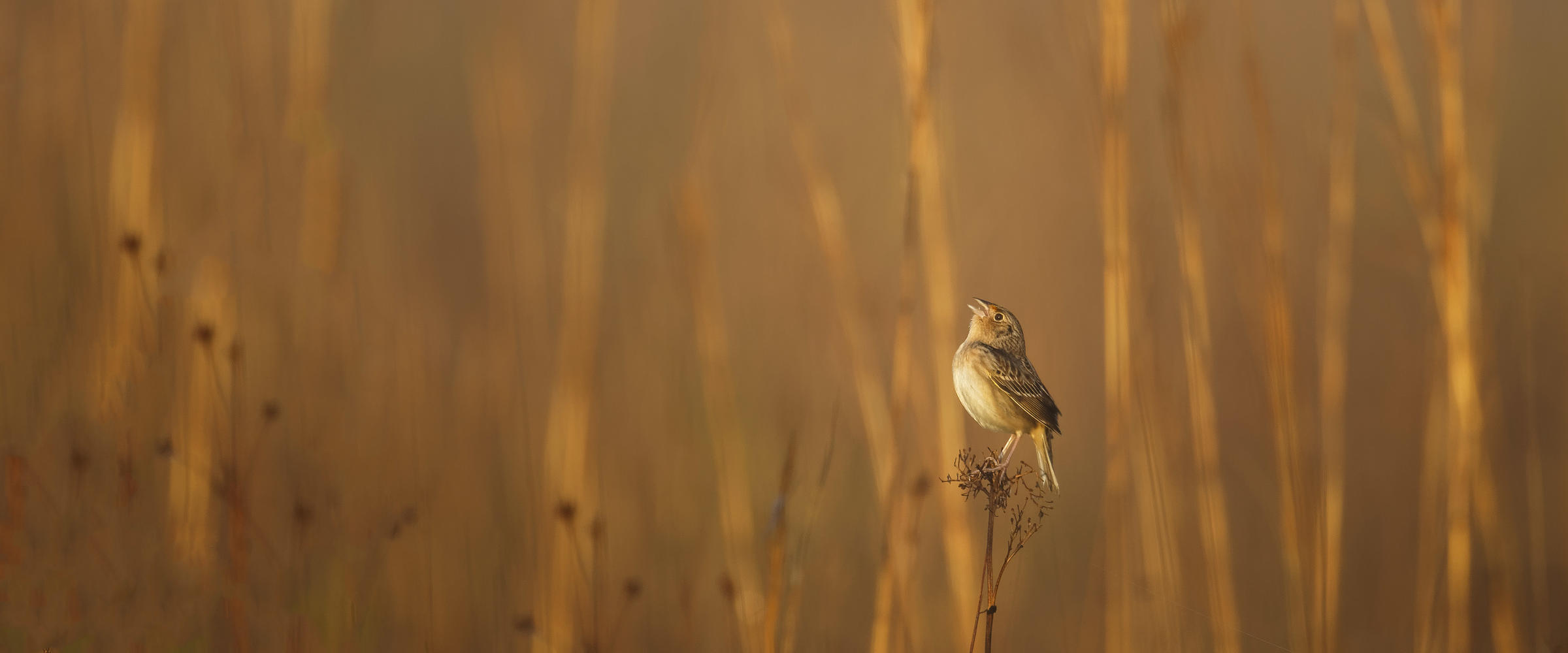Bright sunshine begins to appear over a yellow-green Florida prairie. Last night’s dew on the shrubs and grasses begins to dry in the hot sun. And the faint buzz of insects fills the air. Spring has finally sprung and male Florida Grasshopper Sparrows are up and singing on Florida’s dry prairie ecosystem, as they have for millennia. But this year is different.
Florida Grasshopper Sparrows have been in a severe decline, and there could be as few as 10 females remaining in the wild. Researchers are combing the only places Florida Grasshoppers occur—the Three Lakes Wildlife Management Area (TLWMA), Kissimmee Prairie Preserve State Park (KPPSP), Avon Park Air Force Range (APAFR), and a private ranch—to find remaining sparrows.
The specific cause for the decline remains unknown despite years of exhaustive research and management. Here’s what we know:
• They need native Florida prairie, which is disappearing.
• They move to freshly-burned areas as soon as the smoke clears.
• They abandon areas that have not been burned for three years.
• They strongly avoid areas within 200 yards of trees.
To stem the decline, land managers have taken aggressive steps to make the habitat more hospitable to the imperiled species. They have burned in spring and fall, every one to three years, in every combination possible. They have cut down trees and protected native cover. Managers at KPPSP and TLWMA have even won their respective agency’s “Manager of the Year” awards for their efforts.
Researchers have also made strong moves to protect the species, including marking most of the remaining sparrows with colored leg bands to track their lives and putting predator fences around nests (raising nest success to much higher levels). Yet the decline continues and now there is evidence that adults have lower annual survival rates than they used to.
In a last-ditch effort to save the species from extinction, a captive breeding program has begun. More than 40 birds are in captivity at two facilities, and we are learning to breed them. There have been setbacks with diseases, but these setbacks might be clues. Are wild birds declining due to disease? That seems likely, but until we identify a specific disease we can’t be sure or take specific actions. Two universities are helping search for diseases in the wild and captivity. And an analysis is underway to identify the most imperiled genetic lines, and target who to add to the captive flock and who to protect in the wild.
The good news is we are learning. Audubon has been involved with prairies and sparrows since the 1930s, supporting land acquisitions, funding for management and research, participating in technical meetings, funding some of the research from our Ordway-Whittell Trust Fund, and rallying public support for sparrow conservation.
To learn more about our work to protect and save the Florida Grasshopper Sparrow and other imperiled species, follow us on Facebook and Twitter and sign up for Audubon Florida emails at FL.Audubon.org/SignUp.





